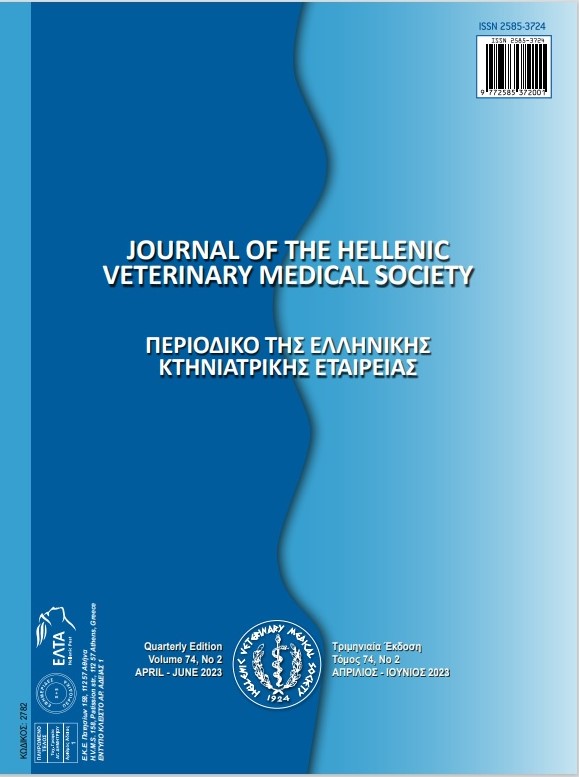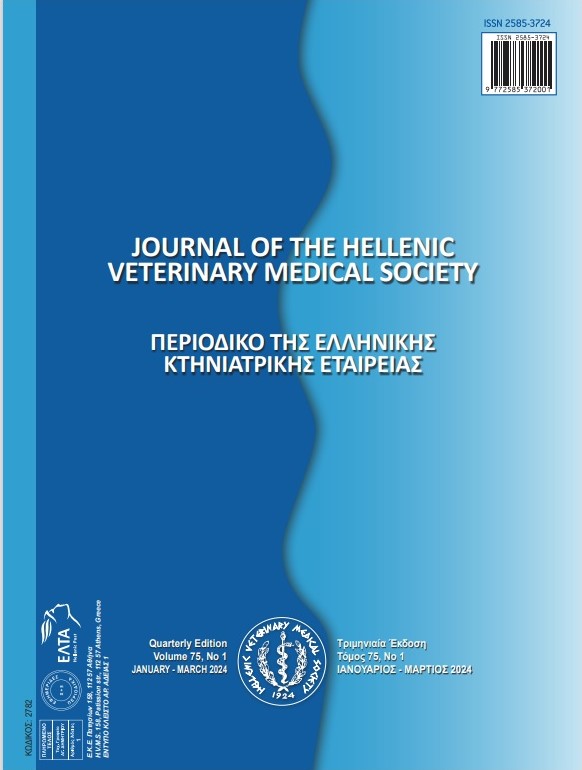Physical and Chemical Properties of Ensiled Safflower (Carthamus tinctorius L.) Cultivars at Three Development Stages
Περίληψη
This study aimed to assess the physical and chemical properties of silages made from six safflower cultivars, harvested at three distinct development stages in Türkiye in 2020. The safflower cultivars were ensiled without additives during the budding, blooming, and seed-filling stages, with three replications. The study evaluated the physical characteristics and DLG scores of the silages, alongside measurements of dry matter content (DM), pH, Fleig score (FS), crude protein (CP), crude fat (CF), crude ash (CA), neutral detergent fiber (NDF), acid detergent fiber (ADF), digestible dry matter (DDM), dry matter intake (DMI), and relative feed value (RFV).
The results revealed no statistically significant difference (p>0.05) in the physical properties, DLG score, and pH values among the safflower silages. However, significant differences (p<0.05) were observed in the DM (33.96% to 40.20%), CF (1.28% to 2.3%), CA (8.44% to 9.17%), NDF (43.40% to 47.44%), ADF (32.32% to 33.18%), DDM (60.72% to 63.75%), DMI (2.53% to 2.77%), and RFV (153.74 to 176.79) values across the different safflower cultivars. Advancing development resulted in increased DM content (24.62% to 48.00%), FS (80.01 to 131.50), CA content (1.12% to 3.03%), NDF content (43.04% to 47.62%), and ADF content (32.86% to 35.12%). Conversely, it led to decreases in CP content (14.66% to 7.65%), CA content (11.14% to 6.56%), DDM content (63.30% to 61.55%), DMI (2.80% to 2.53%), and RFV (177.10 to 155.49). In conclusion, all safflower cultivars demonstrated commendable relative forage values (RFV), with the Olas and Linas cultivars exhibiting superior performance compared to the others. From a harvest management standpoint, ensiling at the budding stage is identified as the most effective practice.
Λεπτομέρειες άρθρου
- Πώς να δημιουργήσετε Αναφορές
-
Yüksel, O., Bıçakçı, E., Arslan Duru, A., & Duru, M. (2025). Physical and Chemical Properties of Ensiled Safflower (Carthamus tinctorius L.) Cultivars at Three Development Stages. Περιοδικό της Ελληνικής Κτηνιατρικής Εταιρείας, 76(2), 9217–9226. https://doi.org/10.12681/jhvms.38664
- Τεύχος
- Τόμ. 76 Αρ. 2 (2025)
- Ενότητα
- Research Articles

Αυτή η εργασία είναι αδειοδοτημένη υπό το CC Αναφορά Δημιουργού – Μη Εμπορική Χρήση 4.0.
Οι συγγραφείς των άρθρων που δημοσιεύονται στο περιοδικό διατηρούν τα δικαιώματα πνευματικής ιδιοκτησίας επί των άρθρων τους, δίνοντας στο περιοδικό το δικαίωμα της πρώτης δημοσίευσης.
Άρθρα που δημοσιεύονται στο περιοδικό διατίθενται με άδεια Creative Commons 4.0 Non Commercial και σύμφωνα με την άδεια μπορούν να χρησιμοποιούνται ελεύθερα, με αναφορά στο/στη συγγραφέα και στην πρώτη δημοσίευση για μη κερδοσκοπικούς σκοπούς.
Οι συγγραφείς μπορούν να καταθέσουν το άρθρο σε ιδρυματικό ή άλλο αποθετήριο ή/και να το δημοσιεύσουν σε άλλη έκδοση, με υποχρεωτική την αναφορά πρώτης δημοσίευσης στο J Hellenic Vet Med Soc
Οι συγγραφείς ενθαρρύνονται να καταθέσουν σε αποθετήριο ή να δημοσιεύσουν την εργασία τους στο διαδίκτυο πριν ή κατά τη διαδικασία υποβολής και αξιολόγησής της.





